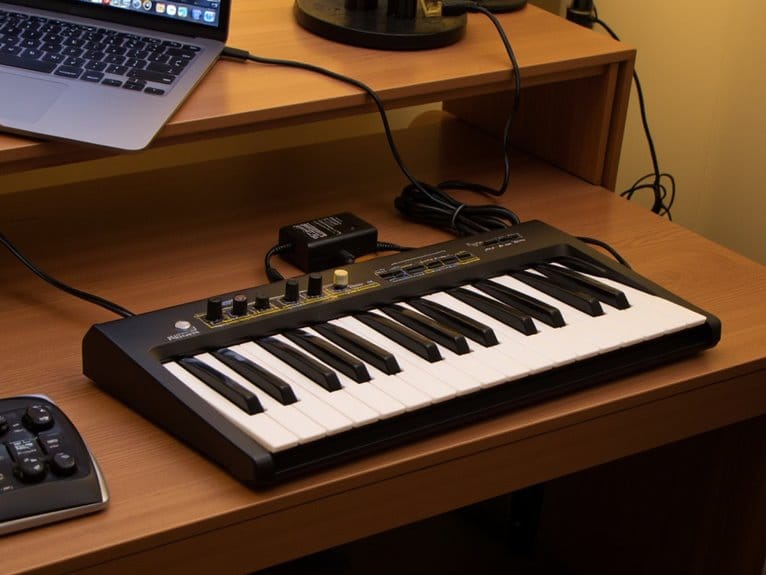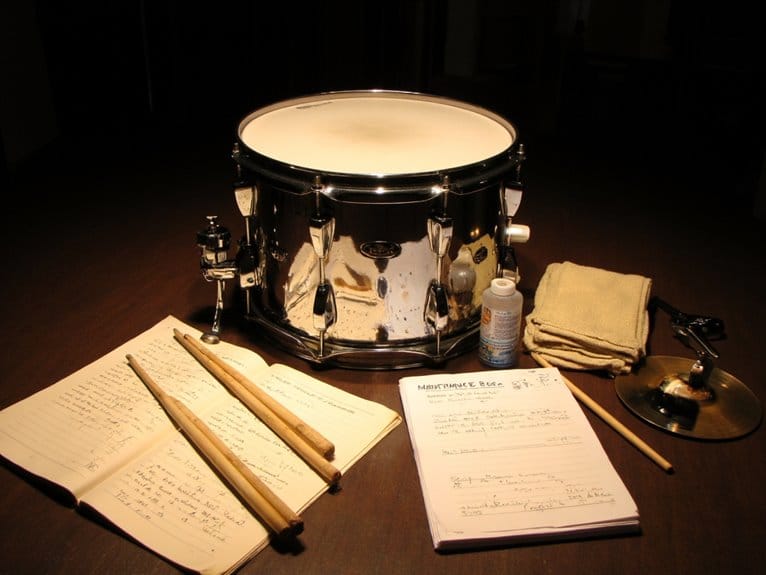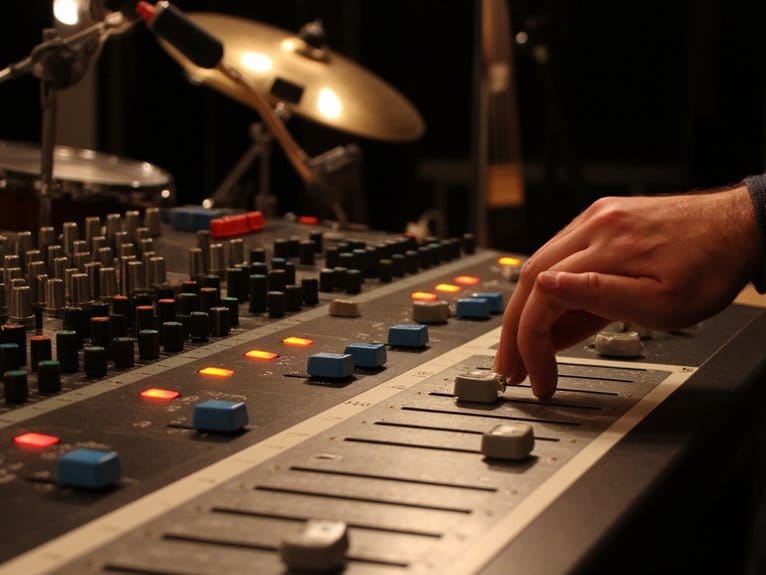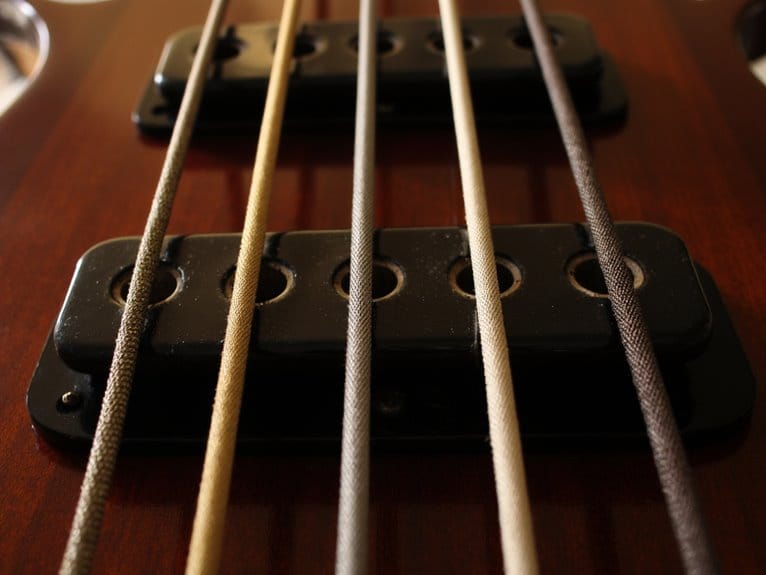What Is a Headphone Amplifier and Do You Need One
A headphone amplifier boosts weak audio signals from your devices, providing the voltage and current your headphones need for clear, undistorted sound. You’ll definitely need one if you’re using high-impedance headphones above 100 ohms, which perform poorly on phones and computers, but low-impedance models under 32 ohms work fine with built-in amplifiers. The choice between solid-state precision and tube warmth depends on your preferences, and understanding impedance matching will help you discover whether your current setup is truly optimized.
We are supported by our audience. When you purchase through links on our site, we may earn an affiliate commission, at no extra cost for you. Learn more.
Notable Insights
- A headphone amplifier boosts weak audio signals from devices to provide adequate power for headphone drivers.
- High-impedance headphones (above 100Ω) require external amplifiers for optimal performance and clear, distortion-free sound.
- Amplifiers enhance audio quality by improving instrument separation, soundstage definition, and dynamic range in recordings.
- Built-in device amplifiers are sufficient for casual listening with low-impedance headphones under 32 ohms.
- Choose amplifiers based on headphone impedance, desired sound signature (analytical vs. warm), and specific feature requirements.
Understanding Headphone Amplifiers and Their Core Function
While many audio enthusiasts debate whether dedicated amplification is necessary, I’ve found that understanding what a headphone amplifier actually does helps cut through the marketing noise and technical jargon.
At its core, headphone amplifier basics involve taking weak audio signals from your phone, computer, or music player and boosting them to appropriate power levels for your headphones.
Unlike the general-purpose amps driving your speakers, these devices operate at lower power levels specifically optimized for headphone drivers, which have vastly different electrical characteristics.
The audio signal boosting function becomes critical when you’re dealing with high-impedance headphones that demand more power than typical device outputs provide, ensuring you’ll hear clear, distortion-free sound rather than struggling with inadequate volume or compressed dynamics. Quality headphone amplifiers achieve impressive audio performance with signal-to-noise ratios above 100dB and ultra-low distortion rates of 0.0003% for clean audio reproduction. However, perceived improvements from adding external amplification can often be psychological rather than based on measurable audio enhancement. This need has become even more pressing as many smartphones no longer include dedicated headphone outputs, forcing users to rely on adapters or built-in amplification that often compromises audio quality. A minimum of 1 watt of clean power is recommended for high-impedance headphones to prevent distortion and achieve optimal dynamic range.
The Critical Role of Impedance in Audio Performance
Because impedance represents one of the most misunderstood yet essential specifications in headphone technology, I’ve learned that grasping this concept can dramatically change how you approach audio equipment purchases and setup decisions.
When you’re dealing with high-impedance headphones, which typically measure above 100Ω, you’ll notice they require more voltage to achieve suitable volume performance, often struggling with smartphone outputs that can’t deliver adequate power. Professional models like the Beyerdynamic DT 990 Pro operate at 250 ohms and deliver superior audio quality with reduced distortion when properly amplified.
Low-impedance models under 50Ω draw more current but need less voltage, making them smartphone-friendly yet potentially problematic with inadequate amplifiers.
Proper impedance matching between your headphones and amplifier guarantees peak power transfer, preventing distortion, clipping, and that disappointing flat sound that occurs when your gear isn’t working together harmoniously.
For guitar players specifically, impedance matching is crucial for optimal sound quality when connecting headphones to guitar amps, ensuring you capture all the tonal nuances of your instrument without compromising audio performance.
How Amplifiers Enhance Sound Quality and Signal Clarity
The transformation that occurs when you connect headphones to a quality amplifier often surprises even experienced listeners.
The difference extends far beyond simple volume increases to encompass fundamental improvements in how your drivers reproduce every nuance of recorded music.
Signal enhancement through proper amplification allows your headphones to capture subtle details that weaker sources simply can’t deliver, lifting low-level information from recordings that you’ve probably never heard before.
The improved audio clarity comes from cleaner power delivery, which reduces strain on your drivers and eliminates the distortion that occurs when sources struggle to provide adequate voltage.
You’ll notice better instrument separation, more defined soundstage positioning, and enhanced dynamic range that makes quiet passages whisper-soft while preserving the full impact of crescendos.
Solid-State vs. Tube Amplifiers: Key Differences
When you’re choosing between solid-state and tube headphone amplifiers, you’ll encounter three fundamental differences that markedly impact your listening experience, budget, and daily usage. Solid-state amplifiers typically offer greater reliability and lower maintenance costs, making them a budget-friendly option for everyday use. In contrast, tube headphone amplifier benefits include a warmer sound and unique harmonic distortion that many audiophiles appreciate for their richness and depth. Moreover, tube amplifiers often allow for greater customization through tube rolling, giving users the ability to tailor their audio experience to personal preferences.
The sound signature represents the most vital distinction, as solid-state amplifiers deliver crystal-clear precision and analytical detail while tube amplifiers provide warm, harmonically rich tones that many audiophiles describe as more musical and engaging.
Beyond sonic characteristics, you’ll also need to take into account practical factors like physical size, portability requirements, initial investment costs, and ongoing maintenance demands that vary dramatically between these two amplification technologies.
Sound Signature Characteristics
Although I’ve spent countless hours listening to both amplifier types, I’ll admit that understanding the fundamental differences between solid-state and tube amplifiers can initially seem like audiophile mysticism-but these differences rest on genuine engineering principles that create distinctly recognizable sound signatures.
Solid-state amplifiers deliver clean, transparent reproduction with precise detail retrieval, making them ideal when you want uncolored amplification that reveals every nuance in your recordings.
Tube amplifiers, conversely, introduce even-order harmonic distortion that many listeners perceive as warmth and musicality, creating a lush midrange with enhanced soundstage depth.
These amplification differences aren’t subtle-you’ll immediately notice how tubes soften transients and add harmonic richness, while solid-state maintains strict linearity and fast response times.
Size and Portability
Where you plan to use your amplifier greatly influences whether solid-state or tube technology makes more practical sense, and I’ve found that size considerations often become the deciding factor for many listeners who initially fell in love with tubes during home auditions.
When examining size comparison between these technologies, solid-state amplifiers consistently win the portability advantages battle through their compact transistor-based designs, lightweight construction, and enclosed cooling systems that don’t require ventilation space around exposed components.
Tube amplifiers, while sonically appealing, demand considerably more physical space due to their bulky glass vacuum tubes, open-air cooling requirements, and generally larger chassis designs that make desktop placement more practical than mobile use for most audiophiles.
Cost and Maintenance
Most audiophiles discover that their amplifier choice involves far more than just the initial sticker price, and I’ve learned through years of testing both technologies that the true cost difference between solid-state and tube amplifiers becomes apparent only after factoring in long-term maintenance expenses, replacement parts, and operational requirements.
Your cost comparison should include tube replacements, which I’ve found run $50-200 per set depending on quality, occurring every 2-3 years with regular use.
My maintenance tips emphasize that solid-state units require virtually no upkeep beyond occasional dusting, while tube amplifiers demand careful handling, proper ventilation, and periodic bias adjustments.
You’ll also notice tube amps generate considerably more heat, potentially increasing your electricity bills and requiring strategic placement away from heat-sensitive equipment.
When Your Setup Requires External Amplification
While your smartphone or laptop might handle basic earbuds just fine, certain headphone setups will leave you reaching for an external amplifier faster than you can say “underpowered output.”
I’ve learned through years of testing gear that high-impedance headphones, those rated above 100 ohms, simply won’t perform to their potential when plugged directly into most consumer devices.
Professional-grade headphones demand external power to release their full sonic capabilities, transforming weak, muddy sound into crisp audio clarity that justifies their price tags.
Without proper amplification, even the most expensive headphones will sound like cheap earbuds, wasting your investment entirely.
When you’re running multiple headphones simultaneously for studio work, or dealing with particularly insensitive drivers that barely whisper at maximum volume, an external amp becomes essential rather than optional.
Your built-in headphone outputs weren’t designed for these demanding scenarios.
For instance, the Beyerdynamic DT 990 Pro with its 250-ohm impedance requires sufficient amplification to drive its drivers effectively and achieve the natural sound reproduction it’s designed to deliver. This characteristic makes the DT 990 Pro an excellent choice among studio monitor headphones, as it provides a clear and detailed audio experience that professionals rely on. However, it’s essential to pair them with a quality headphone amplifier to fully appreciate their capabilities. Without proper power, the performance may suffer, leading to a less-than-optimal listening experience.
Frequently Asked Questions
Can I Use a Headphone Amplifier With Wireless Bluetooth Headphones?
You can’t directly gain amplifier benefits with wireless Bluetooth headphones since they contain built-in amps. However, you’ll find wireless compatibility useful when Bluetooth-enabled amplifiers receive signals for your wired headphones instead.
Do Headphone Amplifiers Drain My Phone or Laptop Battery Faster?
Yes, headphone amplifiers will drain your phone or laptop battery faster due to increased battery consumption. External amps draw additional power from your device, requiring better power management, especially at higher volumes.
Can I Damage My Headphones by Using Too Powerful an Amplifier?
You can damage headphones with excessive power, but proper volume control and impedance matching prevent harm. Sound distortion from clipping poses greater risk than high power itself when you’re using appropriate headphone amplifiers responsibly.
On a final note
You’ll know if you need a headphone amplifier by considering your headphones’ impedance, your current audio source’s power output, and whether you’re experiencing volume limitations or sound quality issues. If you’re driving high-impedance headphones from a smartphone or laptop and notice insufficient volume, distortion, or lack of dynamic range, an external amplifier will likely improve your listening experience considerably.







